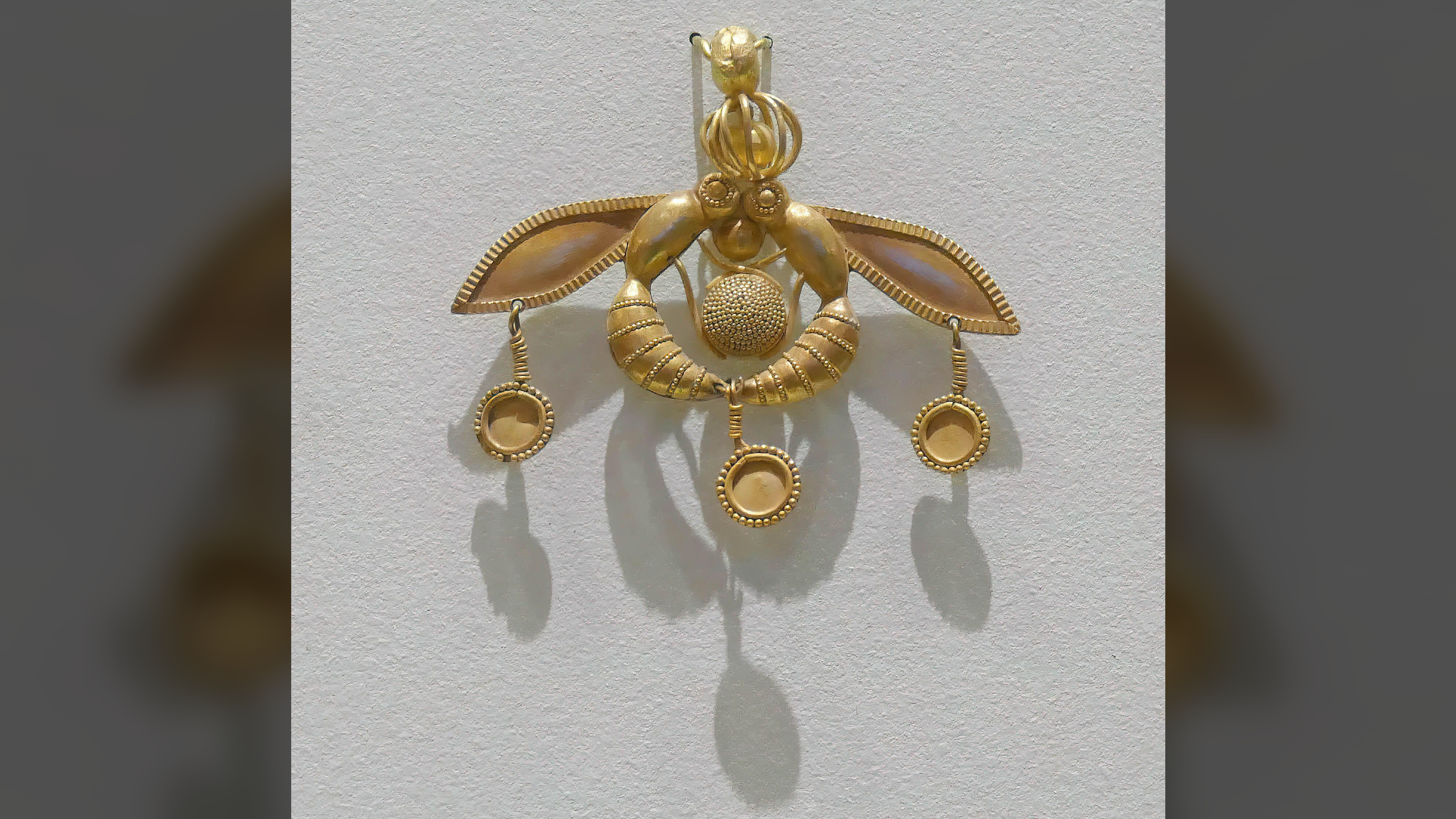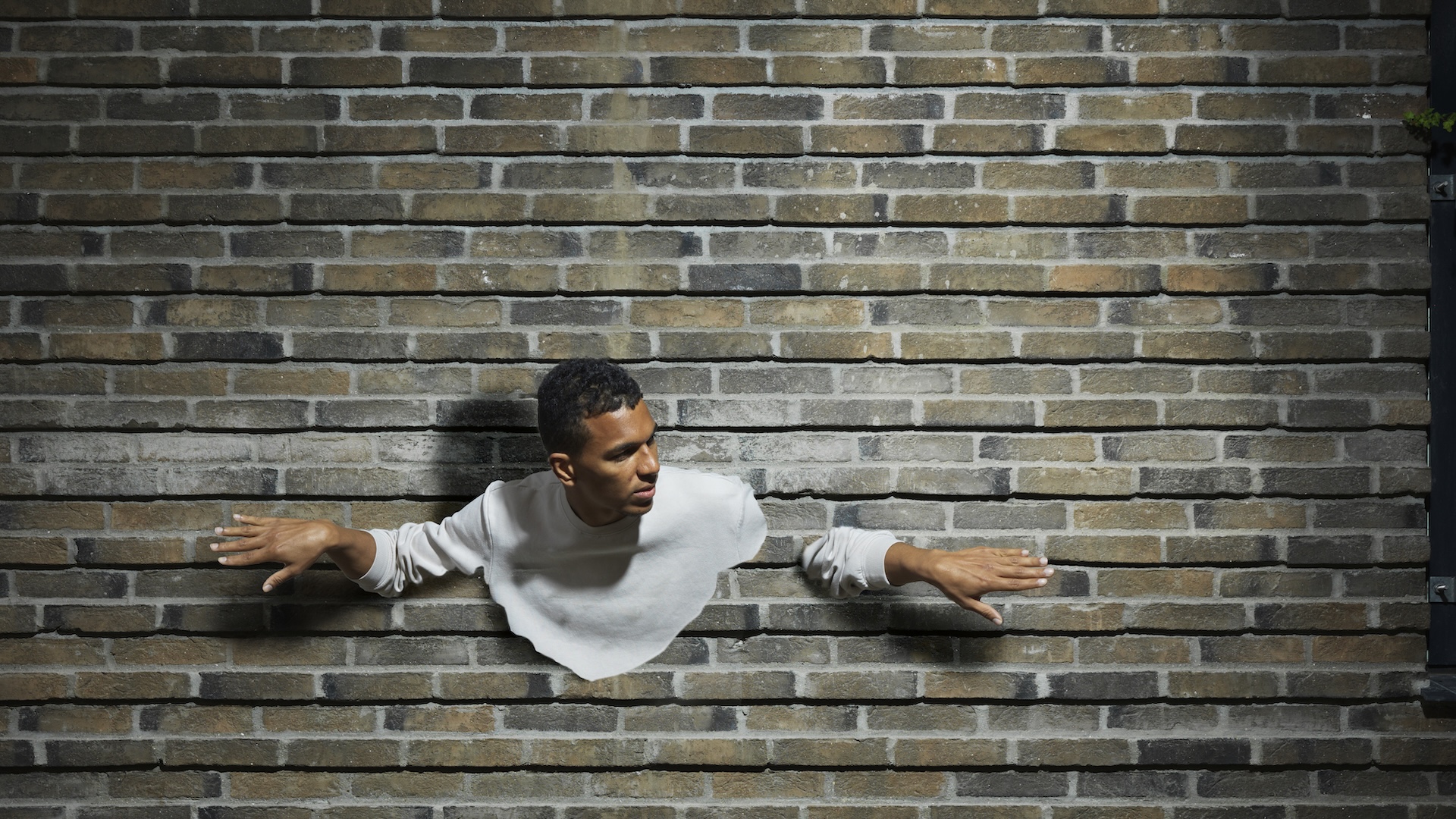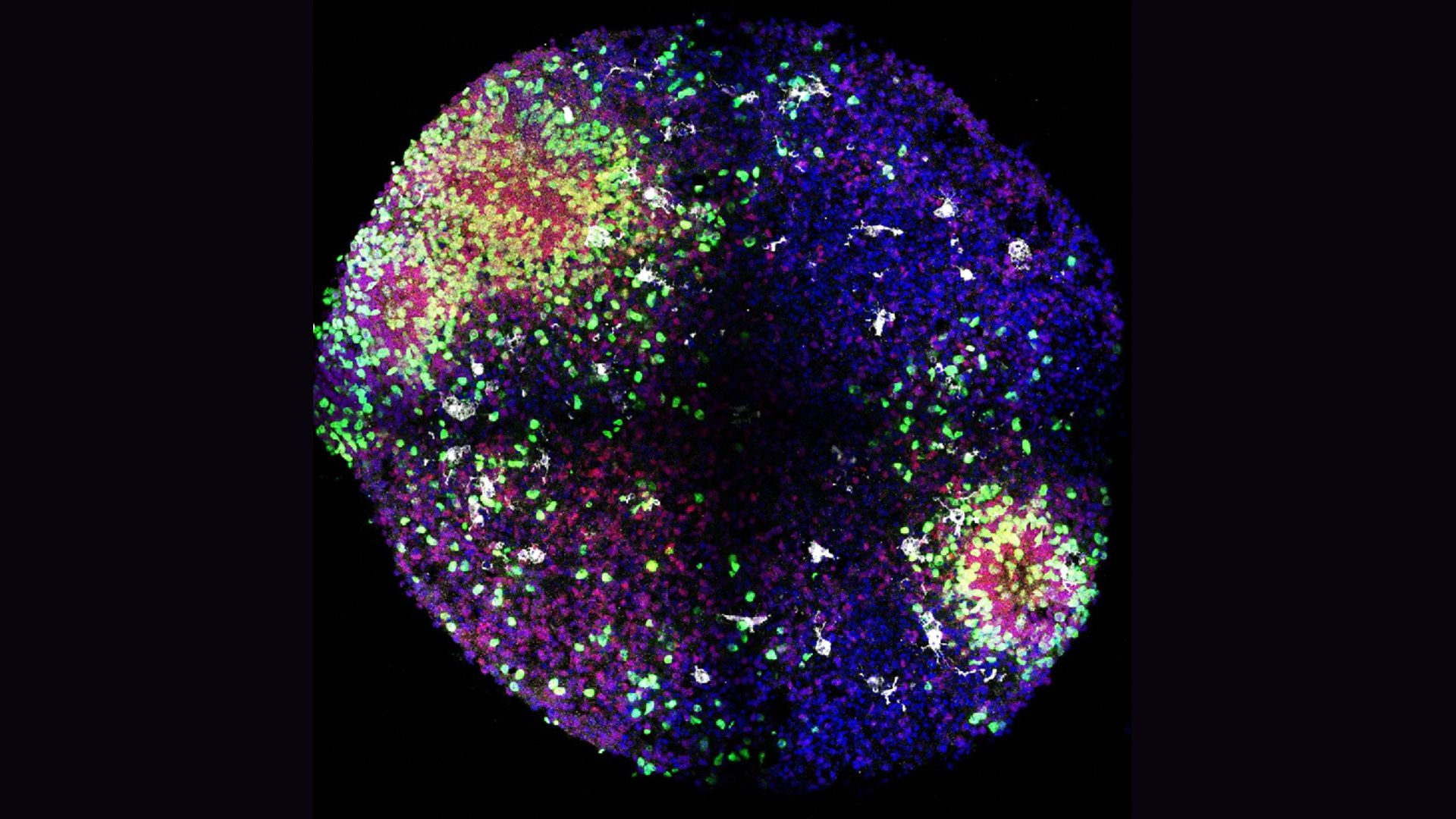QUICK FACTS
Name: Malia Bee Pendant
What it is: A gold pendant
Where it is from: Malia, Crete
When it was made: Between 1800 and 1700 B.C.
This gold pendant was discovered in 1930 at the cemetery of Chrysolakkos, which means “pit of gold,” in the ancient Minoan town of Malia in Crete. Although the famed archaeologist Sir Arthur Evans suggested the jewelry depicted bees, the identity of the insects on the pendant and the meaning behind the design have been debated for nearly a century.
According to the Heraklion Archaeological Museum in Crete, where the pendant is on display, it is 1.8 inches (4.6 centimeters) long and weighs 0.2 ounces (5.5 grams) — about as much as a U.S. quarter. The ancient goldsmith combined several techniques to create the piece — filigree, granulation, repoussé and incised decoration — and the pendant is considered a “masterpiece of Minoan miniature art,” according to the museum.
The pendant depicts two insects facing each other, with their heads and abdomens joined and their wings spread backward. Two legs of each insect appear to grasp a series of concentrically placed gold beads. Three small discs dangle from the wings and joined abdomens.
Some researchers suggest this accessory shows European honeybees (Apis mellifera) in the process of making honey, arguing that the bees are holding a honeycomb and have a drop of honey in their mouths.
“Honey and wax were important elements of the Minoan economy,” according to the Heraklion Archaeological Museum, “while bees also appear to have been important Minoan religious symbols.”
But this interpretation does not account for the three dangling circles, a group of researchers led by botanist E. Charles Nelson wrote in a 2021 study. These circles may represent the fruits of the Mediterranean hartwort (Tordylium apulum), an edible herb that’s common in Crete and produces clusters of disc-shaped fruit with beaded margins.
Related: Pazuzu figurine: An ancient statue of the Mesopotamian ‘demon’ god who inspired ‘The Exorcist’
If the dangling discs represent this fruit, the insects being depicted may not be bees, the researchers argued. The insects on the pendant more closely resemble the mammoth wasp (Megascolia maculata), they said. When it feeds on flowering plants like the Mediterranean hartwort, the mammoth wasp appears to grab the pollen-producing parts of flowers, curling its abdomen around them, with its wings swept backward.
MORE ASTONISHING ARTIFACTS
Exactly what the ancient goldsmith intended to represent with the pendant is still an open question. It’s possible they wanted to depict bees and erroneously used wasps as a model. Regardless, experts agree that the pendant’s creator was extremely skillful at working with gold.
“While the Malia pendant is often viewed as being associated with the craft of beekeeping,” this may not be the case, Nelson and colleagues argued in the study. But in the end, “the jewel represents — indeed celebrates — the natural world of Crete.”














